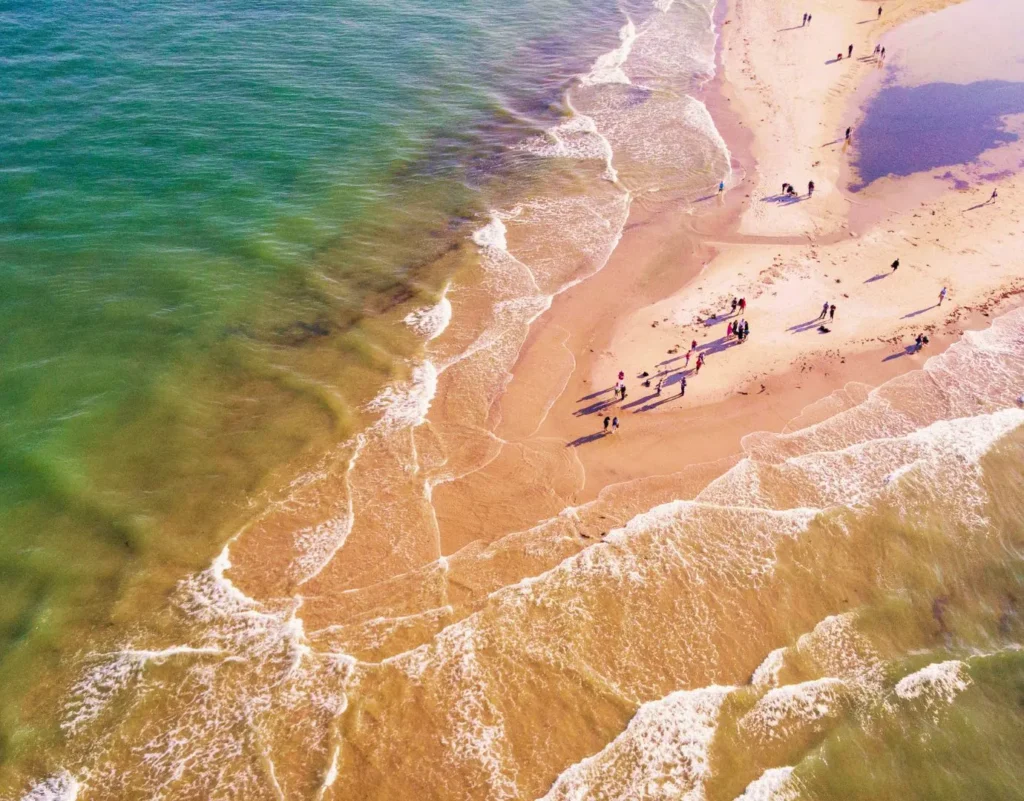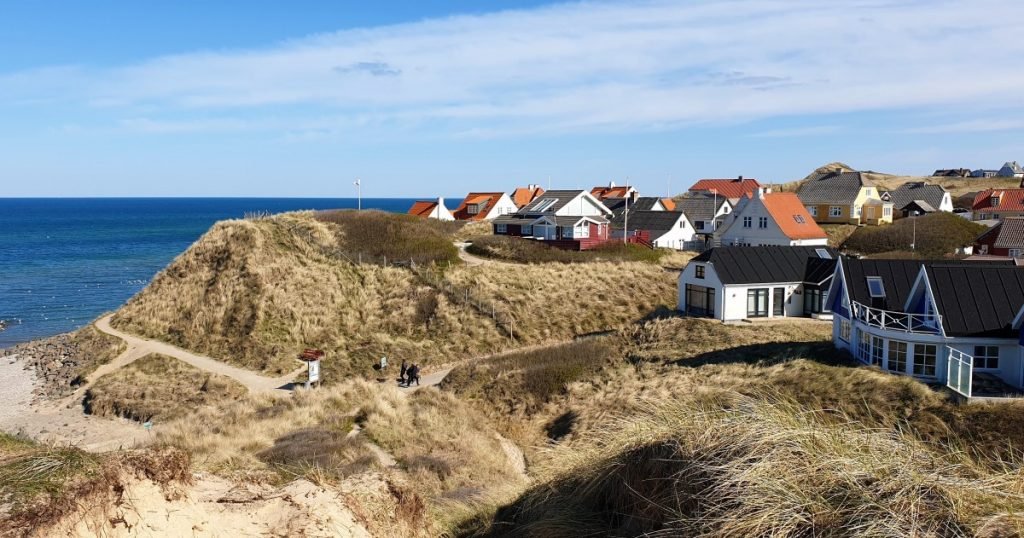North Jutland is distinctly wild and remote and best known for its striking natural landscapes which were shaped by the sands and winds and seas and waves. Area is the northernmost region of Denmark and most sparsely populated. The area is splendid, with beautiful beaches, dunes, and forests.
Grenen

Grenen is one of the most visited places in North Jutland. Going out to the headland and seeing where the two straits meet: Skagerrak and Kattegat, is something special. It is worth noting that swimming is not allowed in Grenen due to sea currents.Appropriately enough for such a neat and ordered country, Denmark doesn’t end untidily at its most northerly point, but on a neat finger of sand just a few metres wide.
You can actually paddle at its tip, where the waters of the Kattegat (an arm of the Baltic Sea) and Skagerrak (part of the North Sea) clash, and you can put one foot in each sea – but not too far. Bathing here is forbidden because of the ferocious tidal currents.
Grenen sits at the very northernmost tip of the country on a narrow peninsula. The name translates as “The Branch” and this refers to this long spit of land barely a kilometre wide. That special location makes it one of the best beaches to catch the waves that are so much a part of Danish west coast beaches.
Råbjerg Mile

Denmark offers such a natural wonder as the Råbjerg Mile. The mini desert provides an impressive view that covers an area of approximately 2 square kilometers. Strong local winds move the 35-meter-high dunes up to 15 meters per year. This makes the Råbjerg Mile the largest migrating dune in Europe. Sand drift control measures have slowed dune drift along the entire west coast of Jutland. But Råbjerg Mile is a protected area, so you can continue to drift freely.
Over 300 years ago, the Råbjerg Mile was established in an area called Råbjerg Stene. Sand prevents vegetation from growing and growing. If you arrive early in the morning you will find that the sand absorbs sound, so the silence is oppressive. However, if you happen to visit when the wind is blowing, you may hear the constant whistle of the wind blowing through the desert landscape of Råbjerg Mile.
Lønstrup

About 20 kilometers south of Hirtshals you will find Lønstrup, a small town on the West coast. Close to Lønstrup, Rubjerg Knude is located, where you can see the over 100-year-old pine, which was moved 70 meters in 2019. In Lønstrup, nature is absolutely magical. Not only Rubjerg Knude, which is stunningly beautiful and tells an exciting story, there is also Lønstrup Klint. Lønstrup Klint shows the rough side of the West Coast. Every year the West coast eats about 2 meters of Vendsyssel and Lønstrup. Lønstrup is a good destination if you love nature on the West coast and local handicrafts

Nørlev Strand

Nørlev is a charming area with a peak and the widest white sand beach in the country. Large dunes characterize the beach, which is the most important tourist attraction. In the natural area next to the beach you can enjoy fishing, horse riding and hiking. Both Skallerup Horse Riding Center and Saga heste offer horse riding on the beach. A white swimming flag hangs on Nørlev Beach, signifying excellent swimming conditions.
Bøgsted Rende

Bøgsted Rende is one of the most breathtaking natural areas in the Thy National Park and represents the place on the coast where the plantation stretches farthest towards the sea. Here you can walk along beautiful winding, twisted paths from dune top to dune top, interrupted by absolutely unique views of the sea, the dunes and the plantation.You can feel the rush of history in this area, which contains one of Thy’s oldest plantations with trees that are several hundred years old.
Lindholm Høje

The grave site on Lindholm Høje is one of Denmark’s most beautiful historical monuments from the Late Iron Age and the Viking Age. It was in use in the period from around AD 400. to approximately the year 1000, and the many stone settings on the mound mark almost 700 cremation graves. The stone formations have different shapes, and oval, triangular and ship-shaped stone formations can be seen on the mound. It has been shown that the graves with the triangular and ship-shaped stone settings have been reserved for men, while cremation graves with women were oval or circular.
